Name: Tiffany K. Fung
Which came first in your life, the science or the art?
I grew up using art as a way of escaping the suburban quietness of Maryland that I lived in. At the time, my father was a source of creative inspiration for me—he was a naval architect whose ability to translate technical ideas onto paper never ceased to fascinate me. He mainly worked on designing the hulls of aircraft carriers but also studied traditional drawing techniques. When I was young, how we bonded was always through learning; most notably, he would teach me how to draw from life. He would teach me how to squint and observe my environment while holding my pencil straight out in front of me at arm’s length to optically measure the object. He was and is an old school artist, and I grew up seeing his old figure studies hanging on the walls.
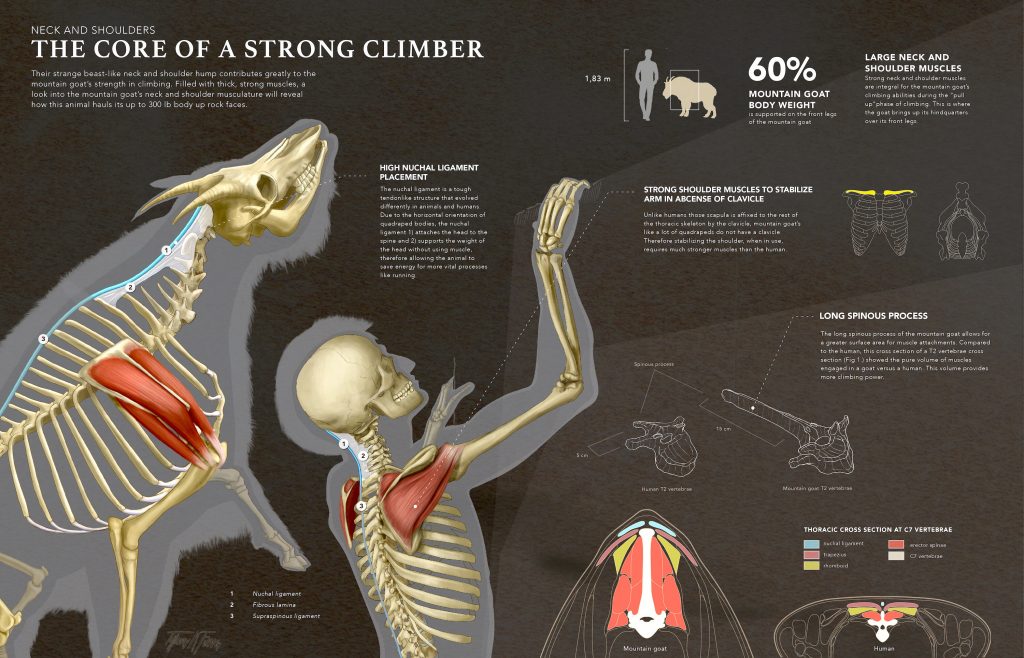
During my undergrad at Oberlin College, I first began pre-med before switching over to art history. During this time, I worked on defining how art fits into my life. Studying art history allowed me to sharpen my eye for composition, understand how an artist has the power to guide a viewer’s eye. This led me to work in design for several years before transitioning into medical illustration.
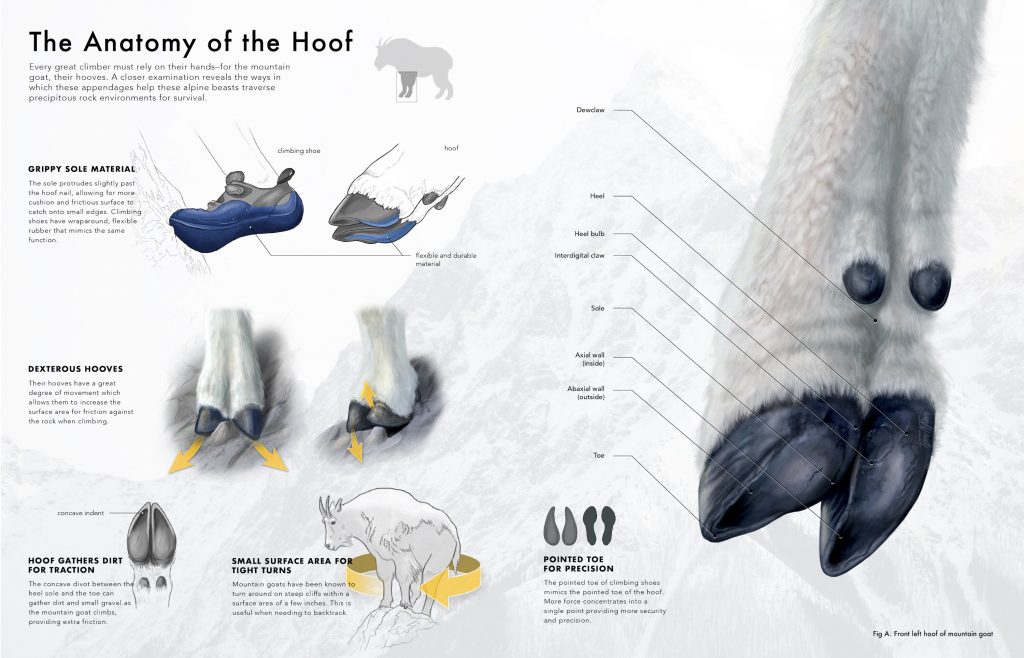
Which sciences relate to your art practice?
Outside of medical illustration, I am a passionate rock climber. In the past few years, I have become more serious about better understanding my own body as a way of improving my performance and ability to train for the sport. Within climbing, power is only one slice of the pie when it comes to shaping a well-rounded athlete. Good technique is necessary to level up. The study of comparative anatomy complements my fascination with understanding my own body’s movement and capabilities. During my master’s study, I focused on comparing the biomechanics of the rocky mountain goat (an impressive quadruped climber) to human climbers. I analyzed the morphological differences between how different species distribute their weight over their limbs to make climbing as efficient as possible. From this, I could make informed decisions with my climbing technique!

What materials do you use to create your artworks?
Wet media baffles me. Nowadays, I work primarily digitally for my medical illustration projects. Photoshop for painting, Illustrator for illustration and some design, and After Effects for motion graphics. For my artwork, I have been exploring cel animation using Animate (although Photoshop has a decent onion-skinning feature in its Timeline function). I’m inspired by the process of creating Japanese anime. In particular, I am interested in how frame-by-frame animation requires a high level of understanding of how to emphasize body movement through exaggeration and timing.

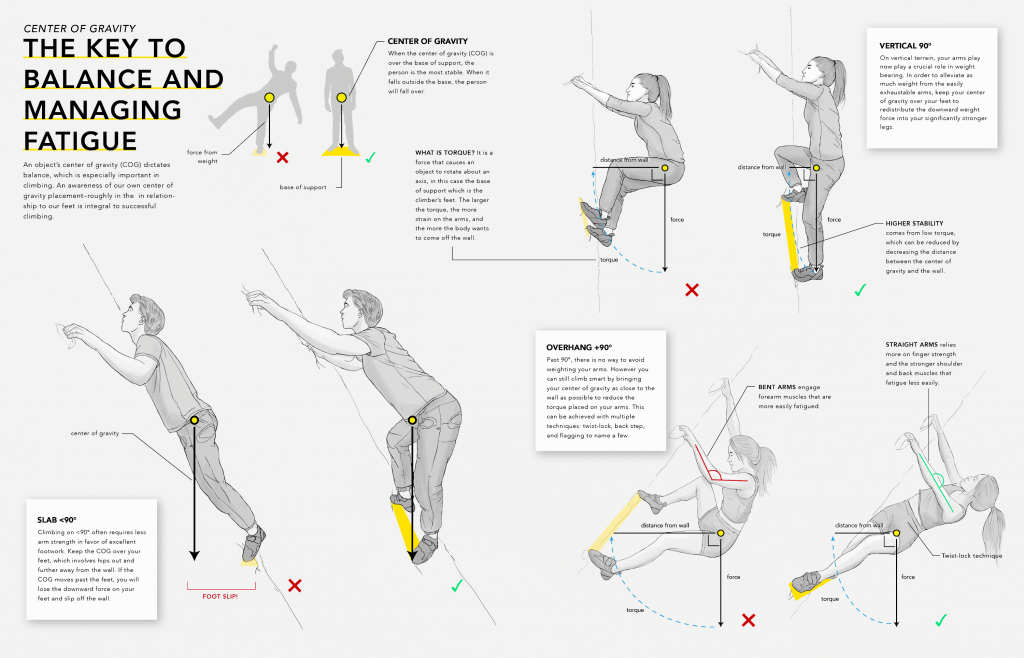
Artwork/Exhibition you are most proud of:
I am most proud of my thesis work as it was an occasion where I was able to combine many passions into my research work: climbing, natural sciences, and anatomy. I moved to Europe in 2018 to complete my master’s in scientific illustration, and it was here where I learned about the alpine ibexes that frequent the alps. Most notably, they were photographed climbing the steep dams of Cingino in Italy. The walls of the dam range from 123 degrees to near vertical. Upon doing some research, I was able to locate a Canadian researcher, Ryan Lewinson, who had researched the ibex’s American cousin, the Rocky Mountain goat. This project allowed me to grapple with many visualization techniques that I found particularly challenging like fur and organic textures in nature.

The second half of my thesis focuses on injuries that are prevalent within climbing. As climbing is a sport relatively new to popularization, there are not as many visualizations of these hyper-specific hand injuries. I am proud to be able to help contribute more visual material to this community so that we can better educate ourselves on our bodies.

Which scientists and/or artists inspire and/or have influenced you?
My interests in the arts are so varied and often not strictly tied to science. However, I like to bring all my interests together and with each new project, I try and incorporate something new from what I’ve learned. I have been interested in tattoo linework for many years now particularly in the aspects of how artists can maintain high levels of detail with thin lines on the skin without them blurring over time. South Korean tattoo artist Oozy is exceptional at this. His works often involve recreating the highly complex illustrations of Japanese painter Takato Yamamoto, all while preserving the complexities of the ornate elaboration of the original artwork.
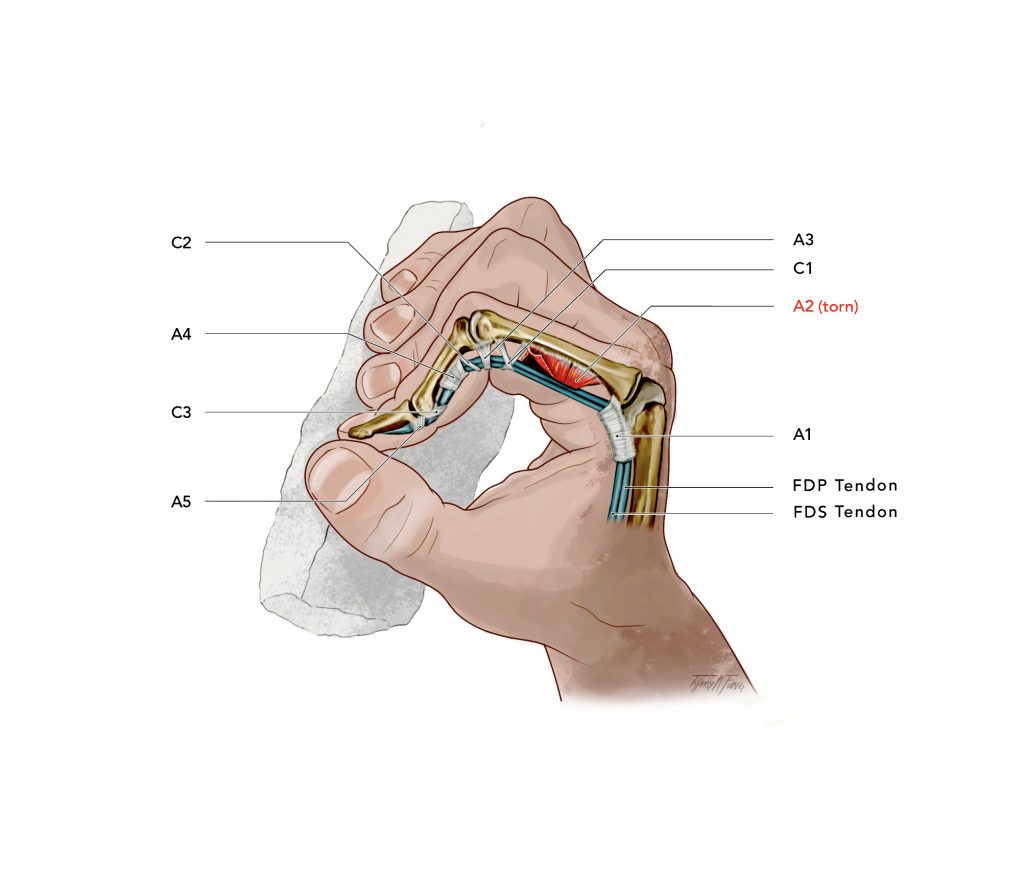
As for colour, lighting, and composition, I admire Maryland-native painter Jesse Mockrin. Her work deals with high contrast and chiaroscuro lighting reminiscent of Caravaggio. Because my work in medical illustration requires scientific accuracy, I appreciate artists that are not bound by exact realism. Mockrin exercises this freedom and subtly plays with the perspective within body parts to create a grander sense of movement in her paintings. Besides, her works feature intentional cropping, oftentimes as if stitching separate paintings together side by side in different canvases. These calculated compositions inspire me to think of my layout and design and the power we have as artists to centre attention.
Most importantly, I am constantly motivated by my classmates of the MSI program at Zuyd Hogeschool. Everyone came from such different scientific and artistic backgrounds and it shows me that the field of medical illustration can be tackled from many angles.
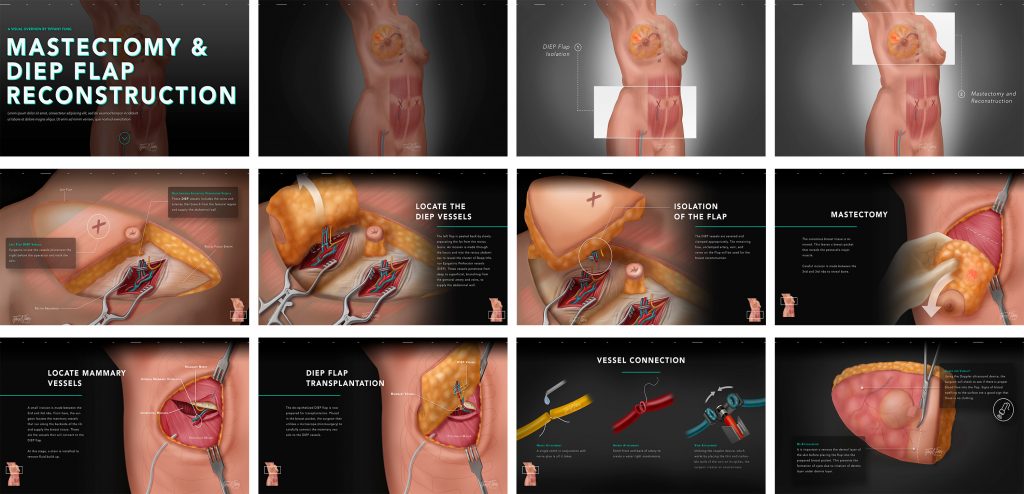
“Sciart is a highly entangled, symbiotic relationship where art helps tell the stories of science, and science helps inspire the visual expression of art.”
Tiffany Fung
SciArt is an emerging term related to combining art and science. How would you define it?
Sciart is a highly entangled, symbiotic relationship where art helps tell the stories of science, and science helps inspire the visual expression of art. It is not a chicken or the egg situation, as the two can exist separately. However, it is their intersection that brings greater understanding, learning, and inspiration for both. Art is a universal language with the ability to make abstract concepts understandable. While they may seem to approach exploration in opposing manners, together they work towards the common goal of communicating knowledge of the world around us to the masses.
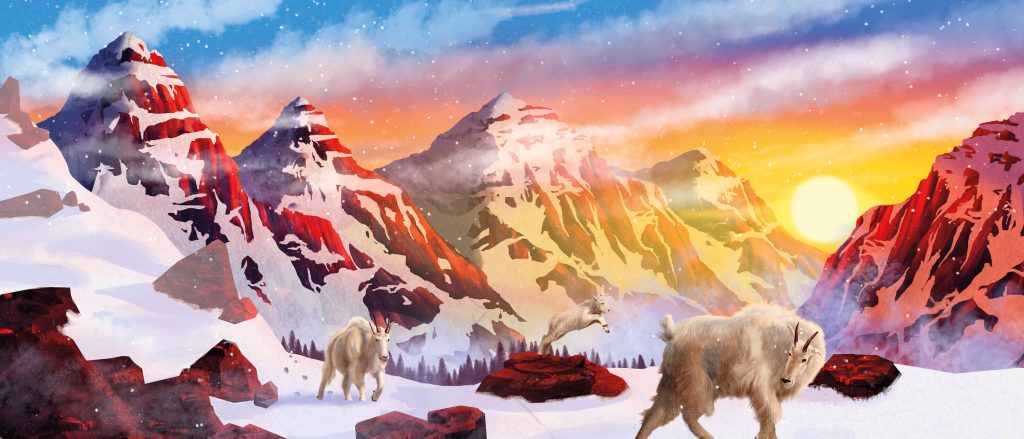
For more by Tiffany K. Fung, visit her website, Instagram, or LinkedIn.
*
Featured image: Detail of Subalpine environment infographic (2020) by Tiffany Fung
All images courtesy of the artist.
Share this Post

